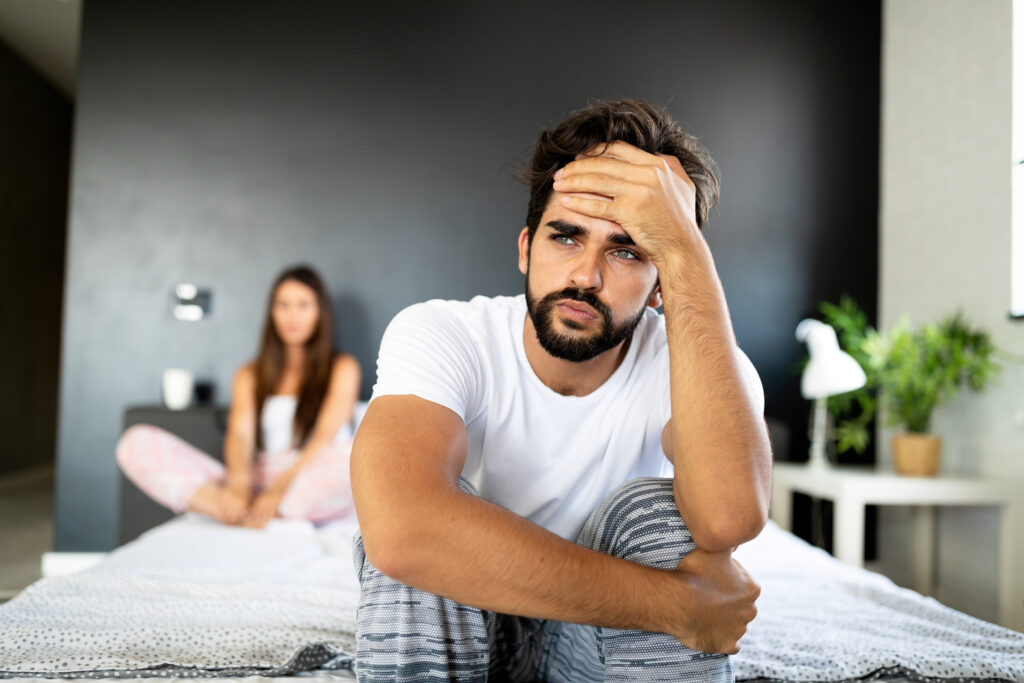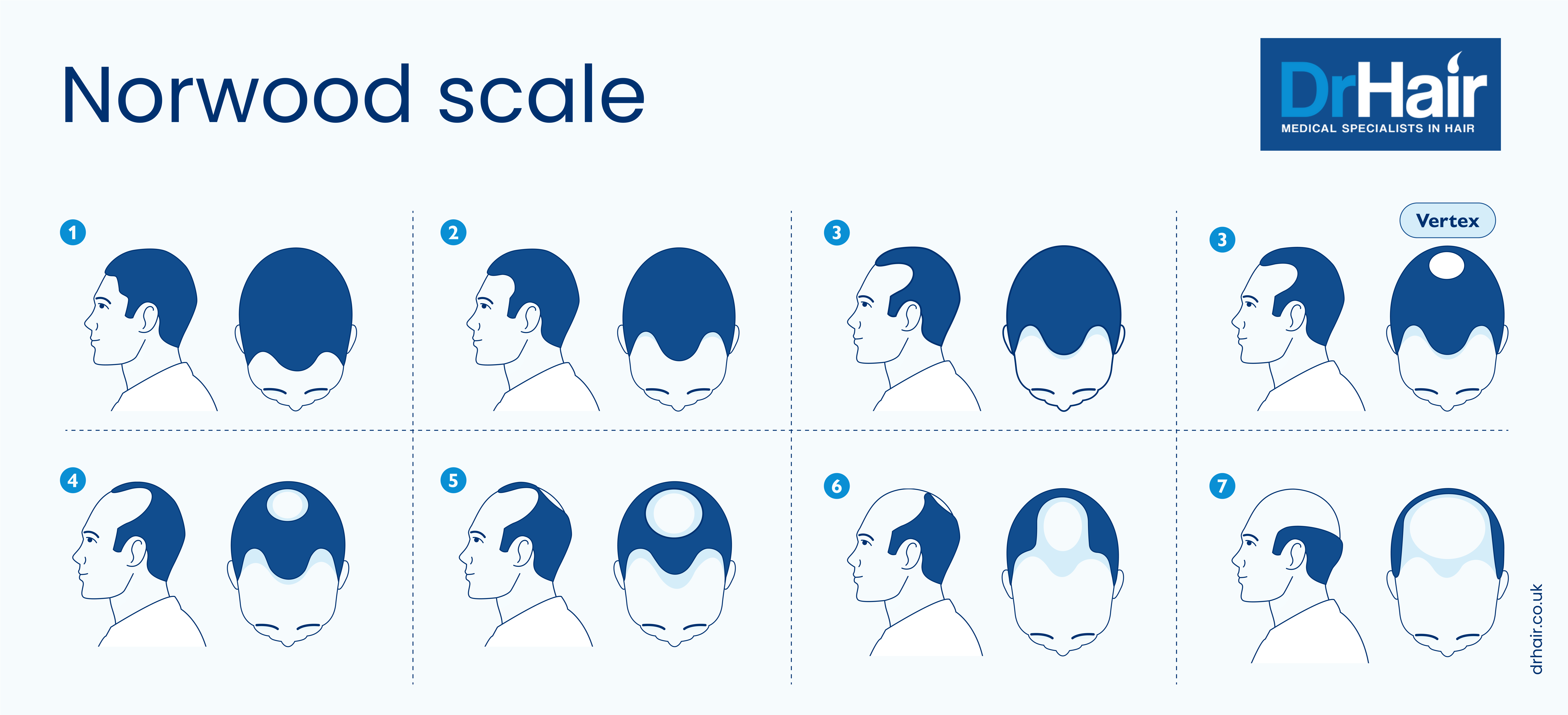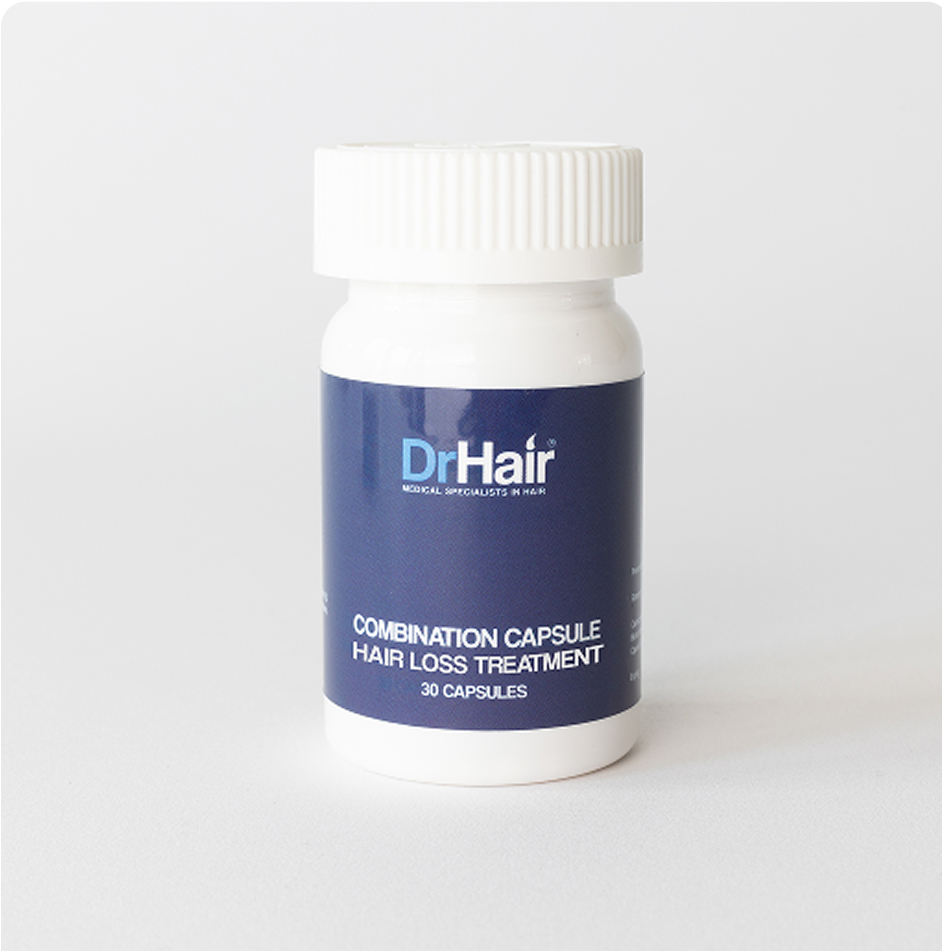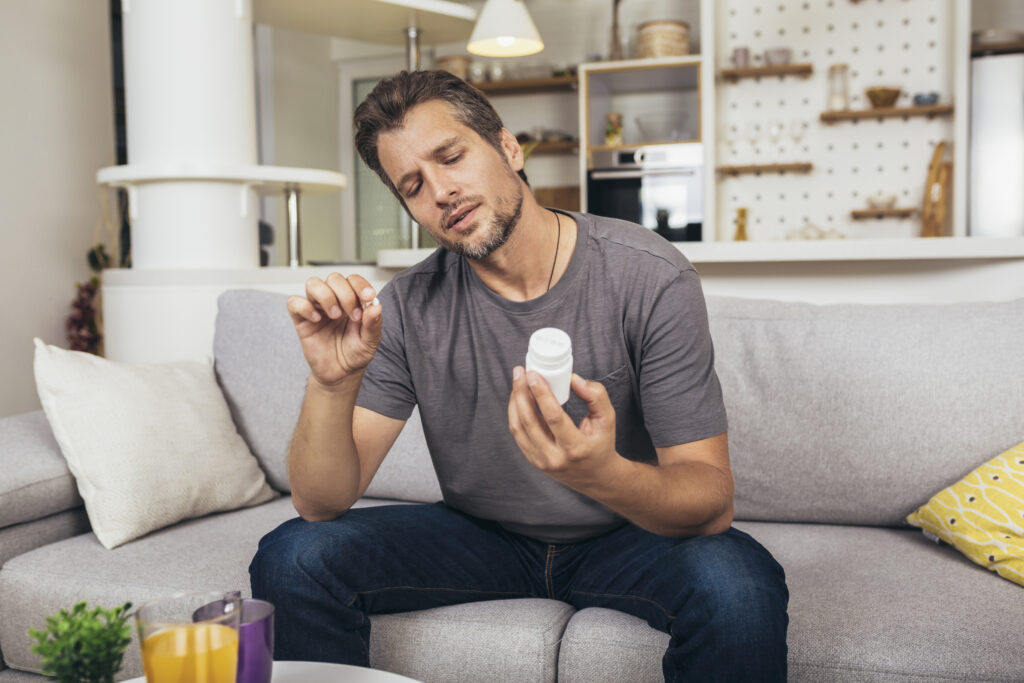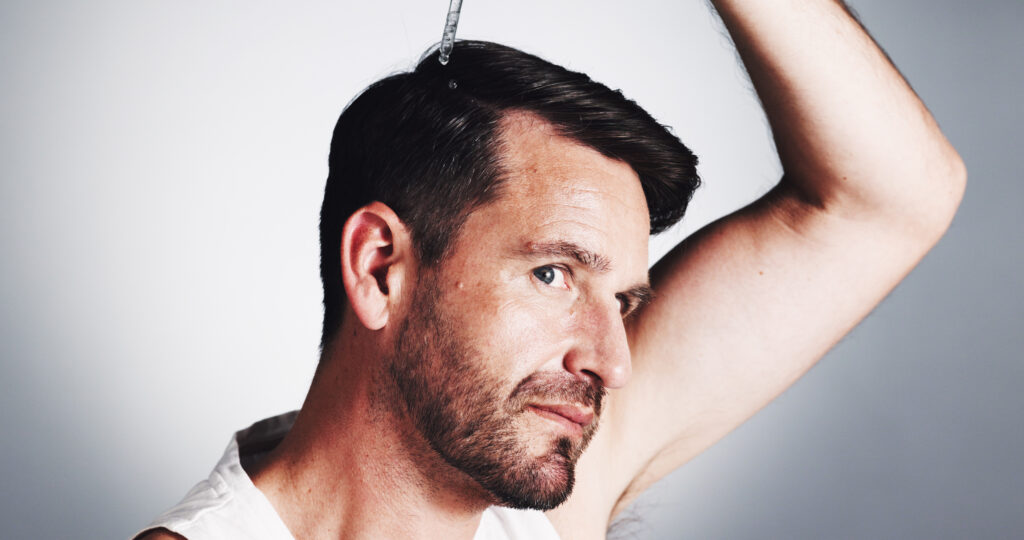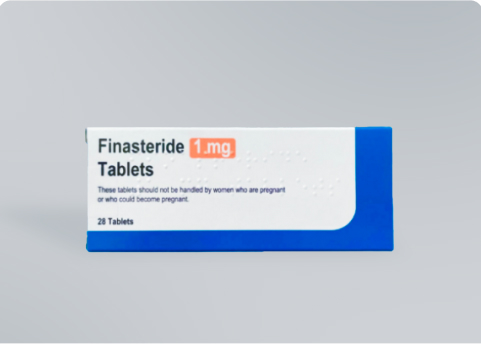Finasteride is a medication designed to reduce dihydrotestosterone (DHT), a type of male sex hormone. It is commonly used to treat prostate disease, but is also a popular male pattern hair loss treatment.
A recently introduced patient alert card for men using finasteride [1] raises several questions:
- Does finasteride have sexual side effects?
- Is it possible to experience a decrease in sexual drive or libido if I use finasteride?
- Is reduced sex drive permanent?
Here, you’ll learn all you need to know about the link between finasteride use and libido, including how likely you are to experience low sex drive when taking finasteride.
Table of Contents
- Why use finasteride for hair loss?
- Rise in concerns about finasteride use
- What are the odds of experiencing reduced libido with finasteride?
- Does finasteride affect sex drive permanently?
- Is finasteride-associated low sex drive reduction a final verdict?
- Does finasteride have a nocebo effect?
- Find the right hair loss treatment with DrHair
- FAQs
Why use finasteride for hair loss?
Male pattern baldness (also known as androgenetic alopecia) is a condition in which normal terminal hairs are replaced with vellus-like thin hair. Left untreated, this often leads to hair loss that follows a typical pattern. It normally starts with a receding hairline and thinning temples, followed by crown hair loss. Eventually these balding areas may meet in the middle, leading to widespread hair loss across the scalp. You can see the progressive stages of male pattern baldness in the Norwood Scale:
Male pattern baldness happens when DHT binds to receptors in the hair follicles, causing them to shrink. DHT is a conversion product of testosterone, and this conversion reaction requires an enzyme called 5-alpha reductase (5AR). Finasteride inhibits 5AR and reduces the production of DHT. Due to this effect, finasteride is commonly used to treat male hair loss.
Rise in concerns about finasteride use
2020 statistics show that over the last 16 years, there was a 42.5% increase in the global interest in finasteride [2]. The online interest is not limited to the therapeutic effects of the treatment but also common side effects, including sexual dysfunctions like low sex drive.
According to a US survey, 51% of respondents believe finasteride has sexual side effects, with 18% agreeing that these problems are persistent [3]. Over 18 years, there were 18 unique legal cases in the Nexis Uni database regarding adverse effects associated with finasteride, 55% of them alleging sexual side effects including erectile dysfunction and decreased libido [4].
But research suggests that loss of libido and other sexual problems are actually relatively rare among finasteride users, especially at a 1 mg dose (which is most commonly prescribed for hair loss) [11]. So how likely are you to experience low sex drive?
What are the odds of experiencing reduced libido with finasteride?
The largest study on 1 mg finasteride side effects to date — including more than 3,100 subjects — found libido was affected in just 8 men: a rate of just 0.25% [11].
Other studies indicate a slightly higher risk of experiencing sexual side effects from finasteride. Male finasteride users, on average, report sexual dysfunction in 3.4% to 15.8% of cases [5-7]. Investigations show that in men, finasteride use leads to a 1.16 to 1.66-fold increase in sexual dysfunction risk [8, 9].
However, these complaints are not all about reduced libido but also include erectile dysfunction, difficulty reaching orgasm, and others. Moreover, most of the studies focus on the side effects of 5 mg treatment, while the optimal recommended dose for hair loss is 1 mg [10].
Does finasteride affect sex drive permanently?
There have been a small number of reports of permanent finasteride side effects. So while it’s very rare, finasteride may cause a permanent or long-term dip in libido.
Finasteride needs to be taken continuously. Long-term use is associated with a greater risk of serious finasteride side effects, so patients may be more likely to stop treatment.
Interestingly, even after stopping the treatment, a small number of finasteride users still experience the symptoms. This is known as post finasteride syndrome. In this condition, the experienced effects are not lifted after stopping treatment. These complaints in men, on average, last for 3 to 5.4 months, which, in some cases, might last even more than six years [12-14].
It’s unclear why post-finasteride syndrome happens, but it’s important to be aware of the possible risks associated with finasteride use.
Is finasteride-associated low sex drive reduction a final verdict?
Despite the reported side effects, scientific findings are not unanimous. The optimal recommended dosage for oral finasteride for hair loss is 1 mg.
Several studies report no difference in the rates of reduced sexual desire or sexual dysfunction between those who received Finasteride or another treatment for 4 to 6 months [13, 15, 16].
Additionally, there is a much higher sexual dysfunction report rate if participants use finasteride for benign prostatic hyperplasia (BPH), a noncancerous prostate enlargement, which requires a 5 mg/day dose [17, 18].
Interestingly, a 2-year-long study investigating men using finasteride for BPH concluded that side effects were not specific to finasteride. More than 40% of participants in the placebo group, receiving sham pills, reported experiencing sexual adverse effects, and 13.2% of them decided to stop the treatment due to these symptoms [19]. This may be due to the advanced age of most BPH patients — sexual dysfunction can occur for many reasons, many of which are unrelated to finasteride. Finasteride may worsen pre-existing sexual performance problems.
In another study, the sexual dysfunction symptoms were resolved in 50% of finasteride users after discontinuation, while only 41% of those who received sham pills reported resolution [20].
These findings raise questions about the reported side effects of finasteride on sexual drive and other sexual dysfunction symptoms. Is it the effect of medication, or are there other factors causing these complaints?
Does finasteride have a nocebo effect?
The nocebo effect is caused by the expectation of the adverse outcome. In other words, individuals who believe the treatment is harmful will experience symptoms [21]. A study with over 100 patients found that patients who were not counselled about the potential side effects of finasteride reported decreased libido in 7.7%, while those who were informed before the treatment reported experiencing reduced sexual desire in 23.6% of cases [10].
Experiencing sexual dysfunction symptoms and reduced libido may have profound psychological and social effects. But it’s important to remember that these side effects are relatively uncommon, and may be linked with other conditions rather than the treatment. As a result, you may be able to tackle them with other treatments like medicines or even counselling. Learn how to reduce the side effects of finasteride.
Find the right hair loss treatment with DrHair
DrHair is committed to providing the most effective hair loss treatment options for you. When you buy from DrHair, you’ll get the best prices for licensed and off-label hair loss treatments, thanks to our unique position as a wholesale supplier that also sells to individual patients.
Take a look at all our hair loss products to decide which is right for you. Still unsure? Book a consultation with our doctor-led team to discuss your options.
FAQs
Learn more about sex drive and finasteride use in these frequently asked questions.
Libido normally returns to normal within a few weeks of stopping finasteride. It may also increase with continued use. In a few cases, studies show that symptoms may persist, on average, for 3 to 5.4 months.
If you’re experiencing low sex drive on finasteride, you may be able to manage this by taking finasteride every other day. However, this may limit your hair growth results too.
Not usually. In most cases, sexual side effects clear up either with continued treatment or soon after stopping finasteride.
In very rare cases of post-finasteride syndrome, some study participants report persisting symptoms even after six years of observation.
Androgenetic alopecia is not limited to men but is also common in women, especially older women with a family history. Finasteride for women isn’t usually prescribed due to certain health risks, especially in premenopausal women.
In female finasteride users, 1.9% to 16%, report reduced sex drive with finasteride use [5-7].


